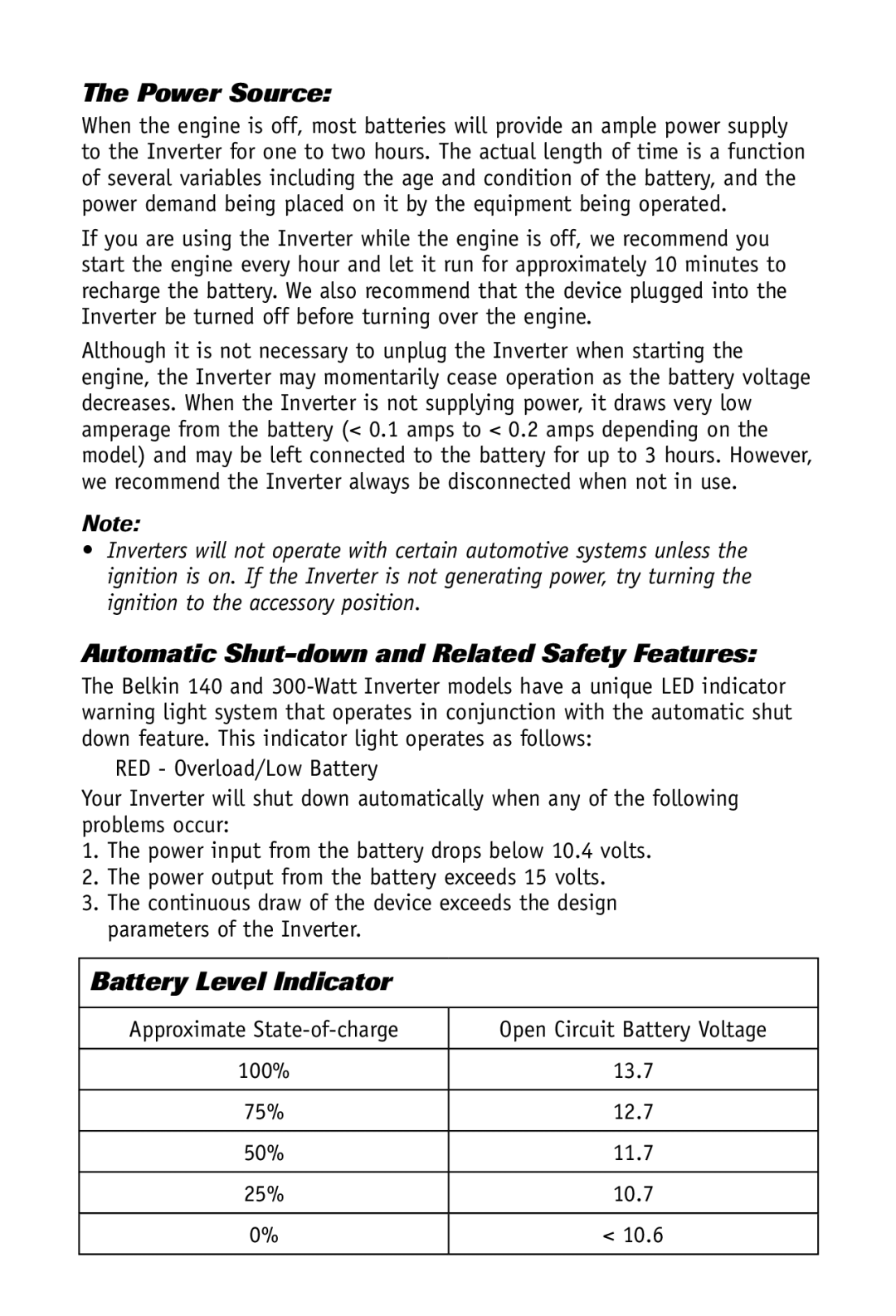
The Power Source:
When the engine is off, most batteries will provide an ample power supply to the Inverter for one to two hours. The actual length of time is a function of several variables including the age and condition of the battery, and the power demand being placed on it by the equipment being operated.
If you are using the Inverter while the engine is off, we recommend you start the engine every hour and let it run for approximately 10 minutes to recharge the battery. We also recommend that the device plugged into the Inverter be turned off before turning over the engine.
Although it is not necessary to unplug the Inverter when starting the engine, the Inverter may momentarily cease operation as the battery voltage decreases. When the Inverter is not supplying power, it draws very low amperage from the battery (< 0.1 amps to < 0.2 amps depending on the model) and may be left connected to the battery for up to 3 hours. However, we recommend the Inverter always be disconnected when not in use.
Note:
•Inverters will not operate with certain automotive systems unless the ignition is on. If the Inverter is not generating power, try turning the ignition to the accessory position.
Automatic Shut-down and Related Safety Features:
The Belkin 140 and
RED - Overload/Low Battery
Your Inverter will shut down automatically when any of the following problems occur:
1.The power input from the battery drops below 10.4 volts.
2.The power output from the battery exceeds 15 volts.
3.The continuous draw of the device exceeds the design parameters of the Inverter.
Battery Level Indicator
Approximate | Open Circuit Battery Voltage |
|
|
100% | 13.7 |
|
|
75% | 12.7 |
|
|
50% | 11.7 |
|
|
25% | 10.7 |
|
|
0% | < 10.6 |
|
|
